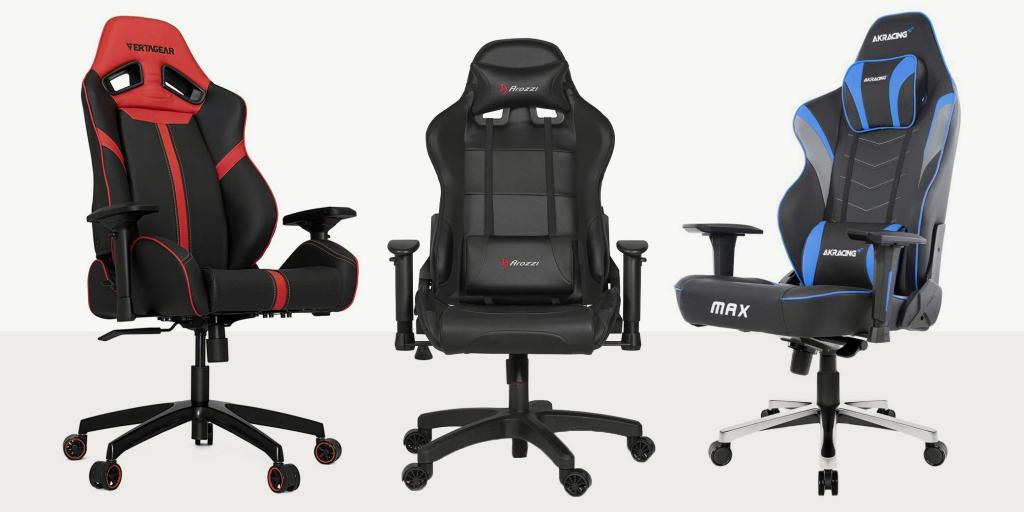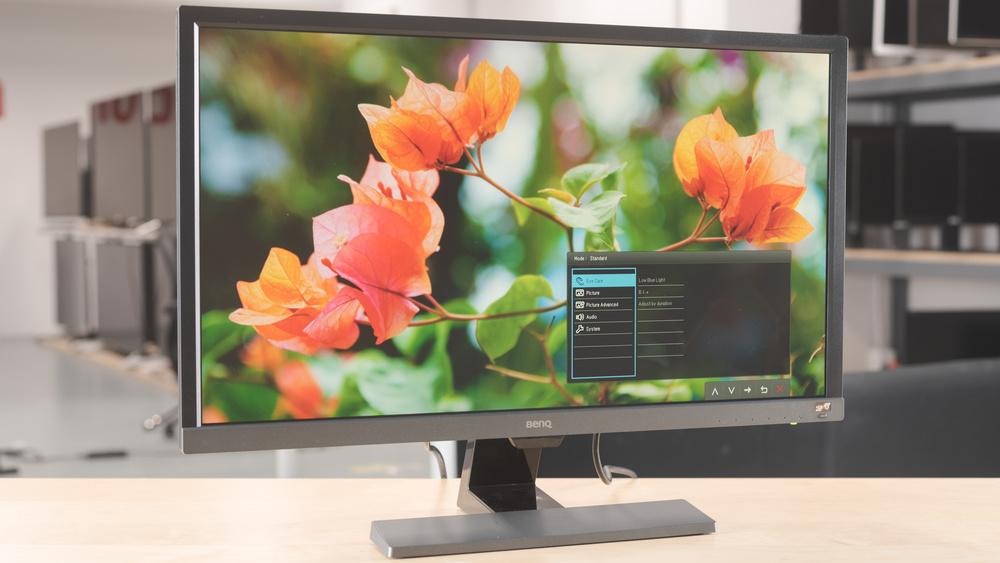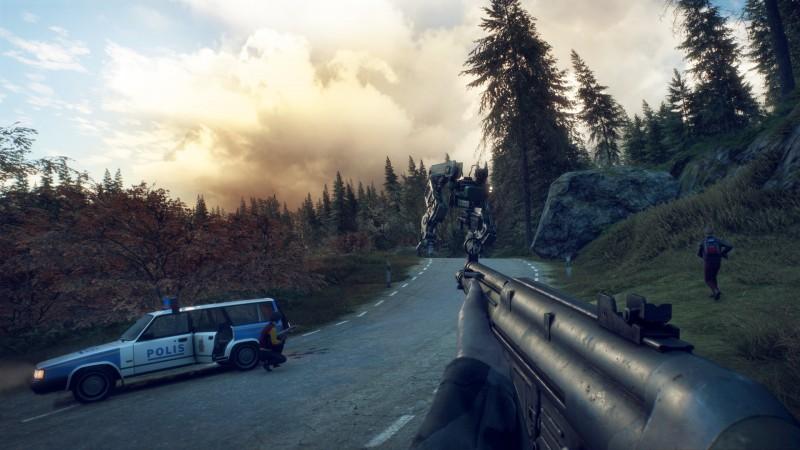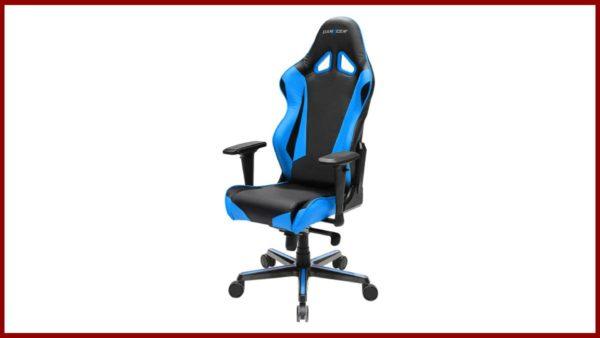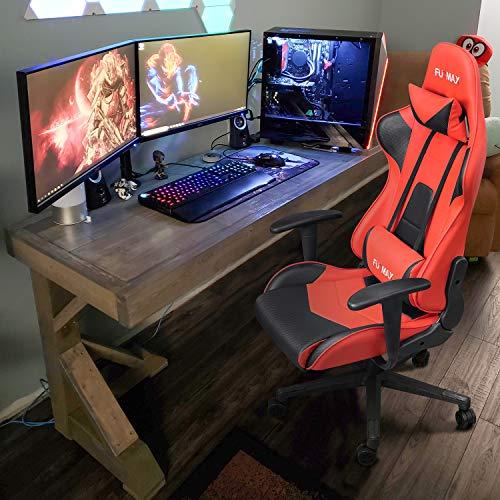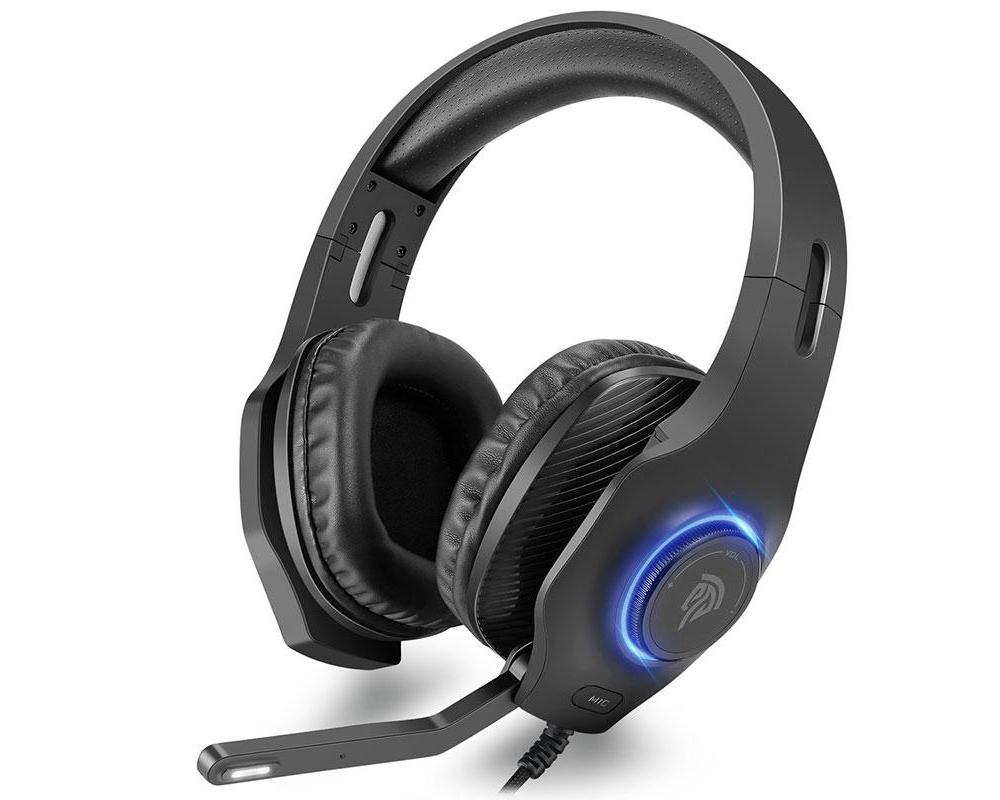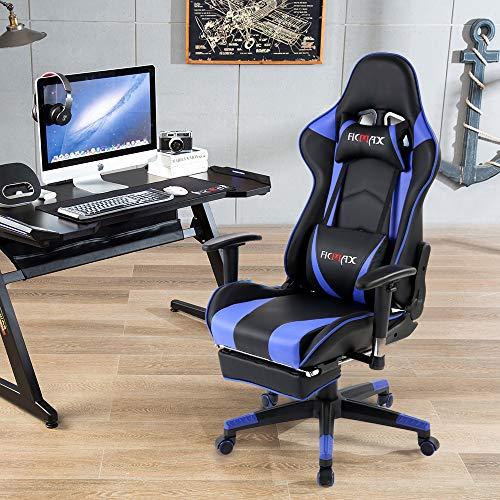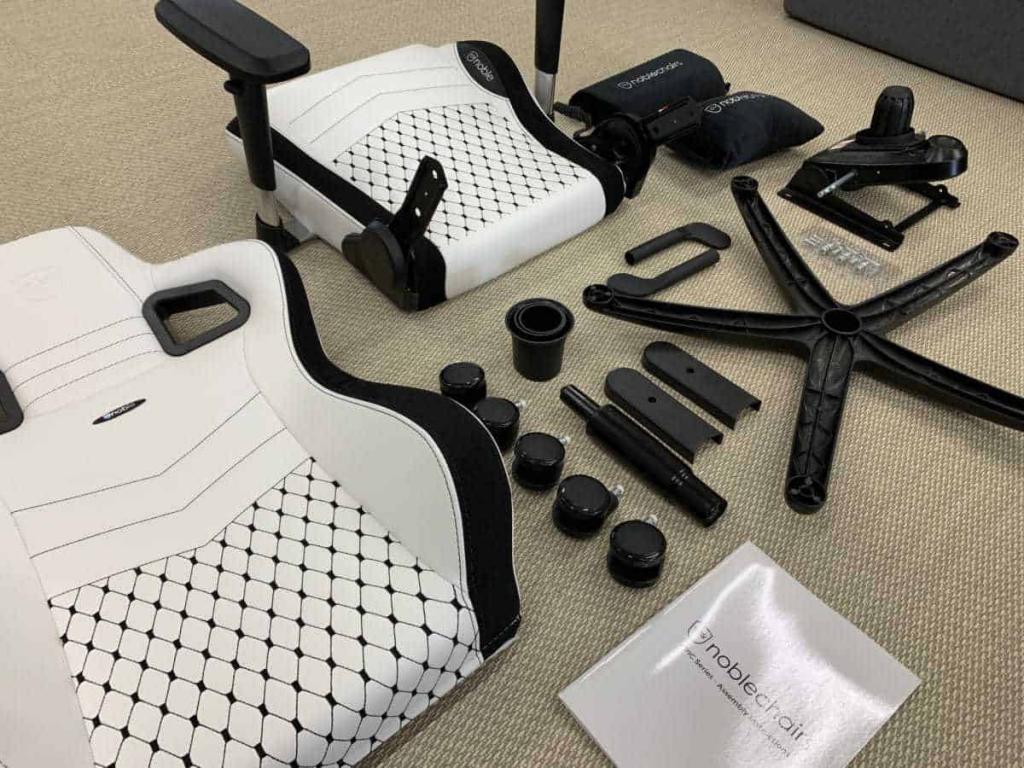Along for the ride with Sam is a cast of characters with equally offbeat names like Heartman and Die-hardman, and standing in their way is Troy Baker’s wonderfully maniacal villain Higgs, who has an appetite for licking faces and chewing scenery. Sam’s sister Amelie is currently being held by Higgs in Edge Knot City, located on America’s westernmost edge.
The story’s setup is intriguing, but if playing as a courier has you thinking Death Stranding will be nothing but a series of glorified fetch quests spread across an entire continent, you’d be right. Ninety percent of the game’s main story missions play out like the side quests we’ve all done in countless other open-world games. In Death Stranding, progressing the story consists primarily of transporting item X from point A to point B, over and over again, with the exception of a few tutorial missions that introduce the basics of the combat system, boss fights, and a handful of other combat-oriented diversions. Seems like a lot of repetition. The good news is that Death Stranding also features optional quests. The bad news is that most of these extra quests require you to go fetch things in order to advance in the story or gain access to new customization features.
The Walking Dread
Initially, I wanted to slow down and pore over every inch of the scorched landscape of Death Stranding, which is what makes the repetitive objectives somewhat bearable. Good thing, too, because I didn’t get much of a say in the matter; the game’s slow beginning made me feel like the developers were taking it out on me and my fellow speedrunners.
Whether it’s The Legend of Zelda: Breath of the Wild or Grand Theft Auto V, or any other game out there, we’re all used to traversing vast environments while armed to the teeth. However, Death Stranding’s inventory system, which is arguably the most frustratingly literal system ever devised in a video game, makes even the most mundane tasks a frustrating chore. Nearly everything you carry has its own weight and takes up space on Sam’s person, and the inventory system is incredibly finicky. This includes cargo, weapons, ammunition, and tools.
While the concept of inventory weight limits is not new or unique to video games, I have always been a bit of a packrat in role-playing games and have occasionally been forced to discard unnecessary items or plod slowly back to town because I had accumulated too much weight. However, Death Stranding pushes the concept to a whole new level of exhaustion. Taking Sam for a short walk up a slight hill is more like pushing a wheelbarrow full of bricks up a flight of stairs, because his personal inventory and cargo very easily become a comically oversized Jenga tower of flight cases teetering on his back.
It’s like trying to haul a wheelbarrow full of bricks up a flight of stairs instead of taking Sam for a short walk up a slight hill. Death Stranding’s movement is the polar opposite of the liberating parkour of Assassin’s Creed or Marvel’s Spider-Man. When playing Death Stranding, you’ll need to hold the triggers and wrestle with the thumbstick to keep Sam’s sensitive momentum shifts under control, as opposed to holding a button and watching your athletic and nimble character effortlessly glide over objects and up and down vertical surfaces, as in other games. All this trouble just so he can walk a few meters up a gentle incline without stumbling and spilling his carefully packed luggage rack like a drunk bellhop.
After discovering the ‘auto-arrange’ option in the inventory menu, I used it for every single delivery thereafter because, frankly, why would you not want the cargo to be optimally distributed across Sam’s body? (The one and only time it backfired was when I was sent to physically deliver a pizza; the auto-arrange shoved the pizza onto my backpack sideways, ruining some poor bloke’s dinner.) Even if you pack Sam’s load more efficiently, he still has the balance of a toddler if you take a wrong step or try to carry too much.
The stakes are elevated to survival-horror levels when these ghostly menaces make an appearance. The presence of BTs in most of the many rainy areas of the map meant that, even once I had a handle on the overly stubborn movement controls, I still had to maintain a slothful stride at all times. The first time he encounters these supernatural foes, Sam has no choice but to crouch and walk past on tenterhooks. These spectral nasties turn the dunes into the terrifying Silent Hills, raising the stakes to survival horror levels the first few times you encounter them. However, they quickly become just one of many mechanics in Death Stranding that seem designed to create as much friction as possible, slowing your progress. Hideo Kojima won over his legions of fans by giving them the chance to assume the role of Snake. It’s his request in Death Stranding that they take the role of a snail.
Strand and Deliver
It takes a lot longer than I would have liked for things to pick up, but they do. By the time you reach the third and final chapter, roughly 10 hours into the game, Death Stranding has found its most consistent and enjoyable rhythm. You quickly gain access to auto-pavers, which can be fed resources to flatten out predetermined stretches of landscape into smooth roads, as well as the tools to construct vehicles like a quick reverse trike, a slow but high-capacity truck, and a floating cargo carrier that doubles as a nifty hoverboard. In the end, though, you’re still just trying to get from A to B, and all of these things can make that process easier.
Here, combat, which up until now has largely consisted of stealth takedowns and unarmed fisticuffs, explodes into an order of magnitude more dynamic form. You’ll be getting new weapons and gadgets at a rapid pace, and once I started infiltrating enemy camps, confusing the human highwaymen with smoke-based decoys, and using the non-lethal sticky gun to whip cargo right off their backs from a distance like a frog’s tongue snatching a fly, I could see the Metal Gear Solid influence in Death Stranding.
The setting changes in Death Stranding just as the game is starting to become consistently enjoyable. The combat abilities have a nice level of depth as well. As an example, Sam can use the bola gun to temporarily immobilize an opponent by wrapping the cord around their torso, giving him time to duck into the shadows or hide behind a rock. Alternatively, a charged shot aimed at an opponent’s throat will cause instant death by suffocation, leaving them unconscious on the ground. While Death Stranding’s combat never quite matches the flexibility of Metal Gear Solid V, it does add a welcome element of play to the otherwise tedious grind of manual labor.
Mounting Frustration
Intense mountainous terrain where vehicles and road construction become impractical, human enemies become scarce, and BTs begin to lurk in snowstorms instead of scattered showers is the new setting and story stalls just as Death Stranding is threatening to become a consistently enjoyable video game.
Each confrontation with Death Stranding’s most formidable foes is undeniably a polished slice of pure, full-fat, Kojima-style spectacle, and by this point I had unlocked the means to confidently take them on in their monstrous form. If Sam is found and dragged down by the clambering shadow hordes of the BTs, who emerge from swelling pools of tar that form beneath his feet, then he will be sluiced on his back through the ooze and resurface in a landscape that has been completely transformed and inhabited by a muscular, physical manifestation of the BTs in a rising pool of bubbling blackness. It’s a stunning visual effect and one of Death Stranding’s classiest tricks.
In spite of this, even if you manage to scramble and take down one of these nightmare beasts, your victory is often insultingly hollow; your reward is usually a handful of crystals for crafting equipment, and the onerous task of manually fetching each of the dozen or so canisters you were carrying that were scattered when Sam was swept off his feet, one after the other. What a disappointment it would be to win a food fight and then be given a mop and bucket as your prize. Consequently, battling BTs is just another aspect of Death Stranding that quickly becomes more trouble than it’s worth, causing anxiety due to tedium instead of terror, and so I resorted to avoiding them wherever possible as I patiently checked off each order on Sam’s seemingly endless list of deliveries.
Xem thêm : Harry Potter: Hogwarts Mystery – Comprehensive Review Update 12/2025
It’s like winning a food fight and being given a mop and bucket as your prize. In a particularly punishing mission late in the game’s narrative, I had to lug a heavy load over extremely steep terrain while stumbling blindly through a snowstorm. It was a 51-minute workout for me. The experience of spending nearly an hour trudging through waist-deep snow, up and down mountains, constantly pushing against fierce winds, while wearing shoes that wear out over time is not something you’d find fun in a video game; it’s more like the lecture your parents used to give you when you complained about having to walk to school. While a podcast would have been more appropriate, Death Stranding does play a licensed piece of music during longer treks like this one (similar to Jose Gonzales’ Far Away in Red Dead Redemption) that is pleasant to walk to.
Although cars aren’t very useful in the mountains, technological advances like exoskeletons and ziplines are making mountain hiking a lot more manageable. Despite the fact that it is satisfying to methodically create your own zipline trail up a particularly rocky escarpment (or to extend partially existing ones), it can be disheartening to reach the peak with the medical supplies you are transporting only to be told to immediately begin transporting a different set of medical supplies back down.
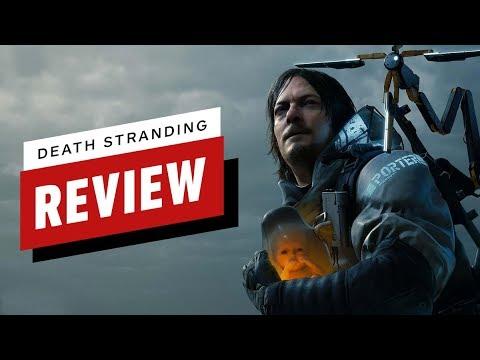
Strand By Me
Kojima Productions’s willingness to experiment is present in every aspect of Death Stranding, for better or worse. Rather than putting you in direct contact with other players, the asynchronous multiplayer mode “Bridge Links” merely displays the results of their actions in the world. It’s a system made to work in tandem with Death Stranding’s central themes of connection, wherein’strands’ are automatically cultivated with other players and the vehicles they abandon, structures they build, or objects they drop all remain in your game’s environment and are free for you to use.
This creates an atmosphere of tacit cooperation, as players can store their weapons and materials in communal lockers and take what they need while leaving what they don’t use. I was especially moved by the group effort required to construct and maintain structures like bridges and watchtowers. Finally making it across the continent’s width in the final stages, I was both surprised and pleased to return to a section of road I had constructed 20 hours earlier on the opposite side of the map and find that it had since grown into a lengthy highway thanks to the diligence of others.
In spite of my best efforts, the road I laid down nearly 20 hours ago has since grown into a sprawling freeway due to the doggedness of other people. The effort is not for naught, as ‘Likes,’ which are used to increase Sam’s stats and improve his reputation with customers, are awarded to users for acts of kindness, whether intended or not. Every successful delivery results in a reward of likes, the number of which is determined by factors such as the distance traveled, the amount of damage sustained by the cargo, and the time it takes to complete the delivery. It’s as if you’re the lone Kardashian to make it through the apocalypse in Death Stranding; the more you’re seen, the more Likes you’ll get.
However, there are drawbacks to using the Bridge Link system. For one, it makes almost every major boss fight in Death Stranding shockingly easy, as Bridge Linked avatars constantly appear by your side to supply you with weapons and health-replenishment blood packs, rendering you overpowered and virtually invulnerable. Besides providing unwanted help, these bosses are merely superficially cool; they have amazing visuals, but their attack patterns and weaknesses are fairly predictable.
While player-built structures can be useful, they can also be misleading. For example, I went out of my way several times in Death Stranding’s mountainous region to use a user-created zipline marked on the map to cross a wide chasm, only to find it half-completed and inoperable. It’s true that you can turn off the Bridge Link system and play in single player mode, but I’d like to see more nuanced options, such as the ability to share building resources while disabling the cheat mode-style boss assists. Death Stranding’s offline mode seems at odds with what I take to be the game’s deeper meaning, and I’d hate to lose that more than I’d hate the extra baggage that comes along with it.
I’m Still Stranding
Although I had many complaints, I was still drawn to the story’s climax in Death Stranding, albeit slowly. That’s largely due to the heroic ideals inherent in mending a broken America, the adventuring spirit required to see what lay beyond the next hill (even if it was usually just a hill of a slightly different shape), and the allure of solving the mystery of Death Stranding. The latter remained especially enticing, what with frequent communications with Margaret Qualley’s Mama and cryptic visions of Mads Mikkelson’s mysterious Clifford. In fact, it was almost there before it stumbled into Death Stranding’s drawn-out exposition dump in the final act.
Sublime artistry and ingenuity kept me going. Sublime works of art and inventiveness, both large and small, kept me going elsewhere. You’ll face bosses that are as big as any of Shadow of the Colossus’ 16 giants, as well as a weather system that lets you predict rain patterns up to 30 minutes in advance, which is essential for plotting your routes to safely avoid BTs.
And then there are countless details like that. In the same way that Sam can use either hand to pick up and toss objects, his dominant right hand will always produce more substantial distance. Or how, even when hiding in the tall grass, your enemy can see you coming a mile away if the stack of bags you’re carrying is too high. What’s more, it has all the cheeky fourth wall breaking nods and winks you’d expect from the mind behind Metal Gear. Every time Sam flushes the toilet, ads for actor Norman Reedus’s real-life television show appear on the vanity screen. It’s clear that Kojima is making fun of Sam.
The joke here is on everyone but Kojima, obviously. However, Death Stranding is like a piece of frosted glass: no matter how well it is polished, it is still rather dull. As a whole, Death Stranding feels convoluted and asks far more of the player than it should. Let’s look at the expedited transportation system. Using the teleporting umbrella, which Sam is compelled to keep hung on the wall, requires slow-traveling to very specific facilities on the map, holding a button to trigger a sequence of three different cutscenes showing Sam descending on an elevator to his private room, lying down to sleep, and waking up from sleep (thankfully you can hit pause on each of them to skip them), and finally panning around Sam’s private room. It’s merely a random idea.
Verdict
The Legend of Zelda: Breath of the Wild and Red Dead Redemption 2 are two recent examples of groundbreaking games that successfully balance realism and pure escapism. Death Stranding, like its bumbling protagonist, has big dreams and lots of creative ideas, but it has trouble striking a consistent balance between the two. It’s a real shame that this fascinating, fully realized world of supernatural science fiction has been saddled on a gameplay backbone that struggles to adequately support its weight across the entirety of the journey, as it can be enjoyed across the vast and spectacular map. To a certain extent, I did ‘Like’ Death Stranding, which is appropriate considering the game’s focus on online acclaim. To put it simply, I never really liked it.
Nguồn: https://gemaga.com
Danh mục: Review

